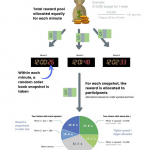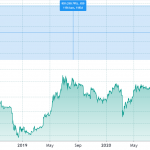As soon as solar started being introduced to the grid, operators and engineers raised concerns about solar resources causing instability. Is it possible, however, for utility-scale solar PV plants to provide grid reliability services?
Mahesh Morjaria, vice president of PV systems for First Solar, says yes.
During a session on advanced ancillary services at POWER-GEN on Oct. 6, Morjaria said that utility-scale solar PV can provide many grid friendly features required by the North American Electric Reliability Corporation, such as voltage regulation; real power control, ramping and curtailment; and primary frequency regulation.
“When you look at that list, the first thing that strikes you is that [those are the features] you need from conventional power plants; so as long as PV plants can do the same thing, you are in business,” he said.
According to Morjaria, First Solar has been building those features into its utility-scale PV plants for a number of years.
Morjaria explained that, for example, the company uses a closed-loop control system, working on a 100-millisecond loop, for voltage support.
“It’s coordinating hundreds or thousands of inverters so that their output acts like one single generator, creating a harmonious power system,” he said.
The company successfully provided voltage support for a 500-kW transmission line that connects the 290 MW Agua Caliente solar plant to the grid. Morjaria said that the transmission line had a 3.8 GW nuclear plant at the end of it, and voltage support was not necessary when Agua Caliente was first commissioned. Later, the nuclear plant was disconnected from the 500-kW transmission line, and in the absence of the nuclear plant, voltage on the line became erratic. The system operator approached First Solar and asked for support with voltage regulation, because the operator knew First Solar had built that capability into the plant.
“We started to control the voltage on the line, and even though active power was changing because of environmental conditions, we could control the voltage,” he said. The PV plant can even control voltage at night when it is not producing active power because the plant is “power electronics-based.”
Morjaria said that First Solar has built grid support services into its plants, “because there’s this transition to a new grid, which will be full of renewable energy, and there are requirements that will come up that can be met in a much more effective manner.”
According to Morjaria, the grid likely will transition from analog – based on rotating machinery – to a power electronics grid, which is digital.
“It’s like going from analog broadcasts to digital broadcast,” he added, noting that the transition may take 50 to 100 years, but that’s the direction in which we’re headed.
The bottom line, Morjaria said, is that solar plants can provide the NERC-identified essential reliability services — frequency control, voltage control, ramping capability/flexible capacity.
“The reason this is important is, if they can do so, then you do not need to rely on traditional generation to provide that, and that’s a benefit,” he said. “It allows more wind and solar to be operative.”














